源码
从lock方法开始
1.lock
static final class NonfairSync extends Sync { private static final long serialVersionUID = 7316153563782823691L; final void lock() { if (compareAndSetState(0, 1)) setExclusiveOwnerThread(Thread.currentThread()); else acquire(1); } protected final boolean tryAcquire(int acquires) { return nonfairTryAcquire(acquires); } }
static final class FairSync extends Sync {
private static final long serialVersionUID = -3000897897090466540L;
final void lock() {
acquire(1);
}
protected final boolean tryAcquire(int acquires) {
final Thread current = Thread.currentThread();
int c = getState();
if (c == 0) {
if (!hasQueuedPredecessors() &&
compareAndSetState(0, acquires)) {
setExclusiveOwnerThread(current);
return true;
}
}
else if (current == getExclusiveOwnerThread()) {
int nextc = c + acquires;
if (nextc < 0)
throw new Error("Maximum lock count exceeded");
setState(nextc);
return true;
}
return false;
}
}
2.AbstractQueuedSynchronizer.acquire()
public final void acquire(int arg) {
if (!tryAcquire(arg) &&
acquireQueued(addWaiter(Node.EXCLUSIVE), arg))
selfInterrupt();
}
3.AbstractQueuedSynchronizer.tryAcquire() => nonfairTryAcquire()
final boolean nonfairTryAcquire(int acquires) {
final Thread current = Thread.currentThread();
int c = getState();
if (c == 0) {
if (compareAndSetState(0, acquires)) {
setExclusiveOwnerThread(current);
return true;
}
}
else if (current == getExclusiveOwnerThread()) {
int nextc = c + acquires;
if (nextc < 0) // overflow
throw new Error("Maximum lock count exceeded");
setState(nextc);
return true;
}
return false;
}
3.1 如果t2加锁成功 setExclusiveOwnerThread()
protected final void setExclusiveOwnerThread(Thread thread) {
exclusiveOwnerThread = thread;
}
4. t2加锁失败 先addWaiter()
private Node addWaiter(Node mode) {
Node node = new Node(Thread.currentThread(), mode);
// Try the fast path of enq; backup to full enq on failure
Node pred = tail;
if (pred != null) {
node.prev = pred;
if (compareAndSetTail(pred, node)) {
pred.next = node;
return node;
}
}
enq(node);
return node;
}
private Node enq(final Node node) {
for (;;) {
Node t = tail;
if (t == null) { // Must initialize
// 初始化 如果头结点为空,创建一个空的Node
if (compareAndSetHead(new Node()))
tail = head;
} else {
// 将node加入队尾(双向链表)
node.prev = t;
if (compareAndSetTail(t, node)) {
t.next = node;
return t;
}
}
}
}
5.再acquireQueued()
final boolean acquireQueued(final Node node, int arg) {
boolean failed = true;
try {
//interrupted 这个值用来防止打断
boolean interrupted = false;
for (;;) {
final Node p = node.predecessor();
//判断前一个节点是不是头结点,也就是初始化的那个空节点,如果是,就表示队列前面没有人排队,自己可以抢锁。
if (p == head && tryAcquire(arg)) {
setHead(node);
p.next = null; // help GC
failed = false;
return interrupted;
}
//前面有人,就需要排队了
// shouldParkAfterFailedAcquire 判断加锁失败之后是否需要去睡眠
if (shouldParkAfterFailedAcquire(p, node) &&
parkAndCheckInterrupt())
interrupted = true;
}
} finally {
if (failed)
cancelAcquire(node);
}
}
5.1 shouldParkAfterFailedAcquire 告诉前一个节点解锁的时候把自己叫醒
private static boolean shouldParkAfterFailedAcquire(Node pred, Node node) {
int ws = pred.waitStatus;
// 判断上一个节点是不是需要唤醒别人的节点
if (ws == Node.SIGNAL)
/*
* This node has already set status asking a release
* to signal it, so it can safely park.
*/
//如果上一个节点已经设置为-1,自己就直接去睡眠
return true;
if (ws > 0) {
/*
* Predecessor was cancelled. Skip over predecessors and
* indicate retry.
*/
do {
node.prev = pred = pred.prev;
} while (pred.waitStatus > 0);
pred.next = node;
} else {
/*
* waitStatus must be 0 or PROPAGATE. Indicate that we
* need a signal, but don't park yet. Caller will need to
* retry to make sure it cannot acquire before parking.
*/
// 如果上一个节点还没有设置-1,就把它改成-1
compareAndSetWaitStatus(pred, ws, Node.SIGNAL);
}
return false;
}
加锁流程图
加锁之前
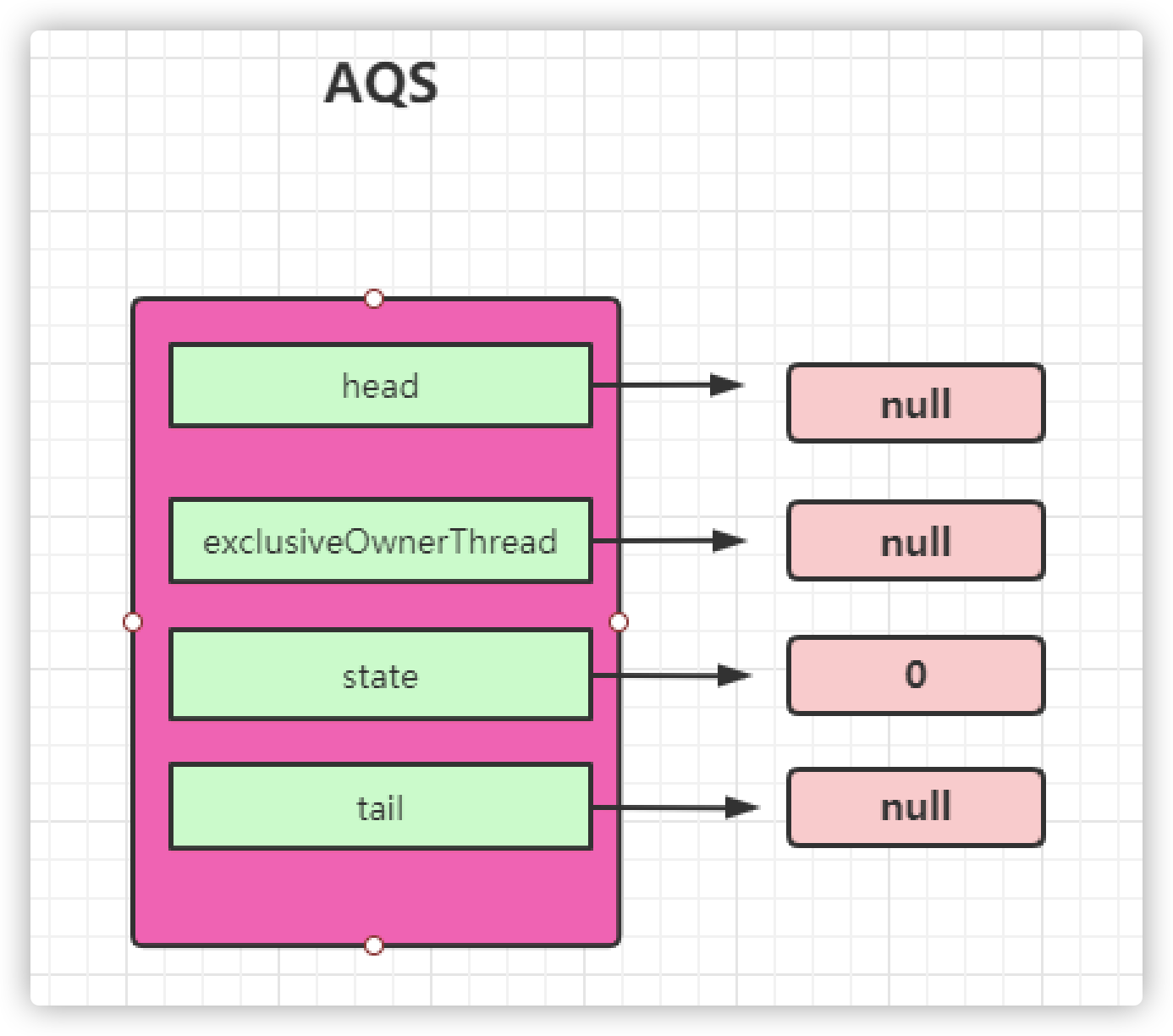
第一次加锁之后
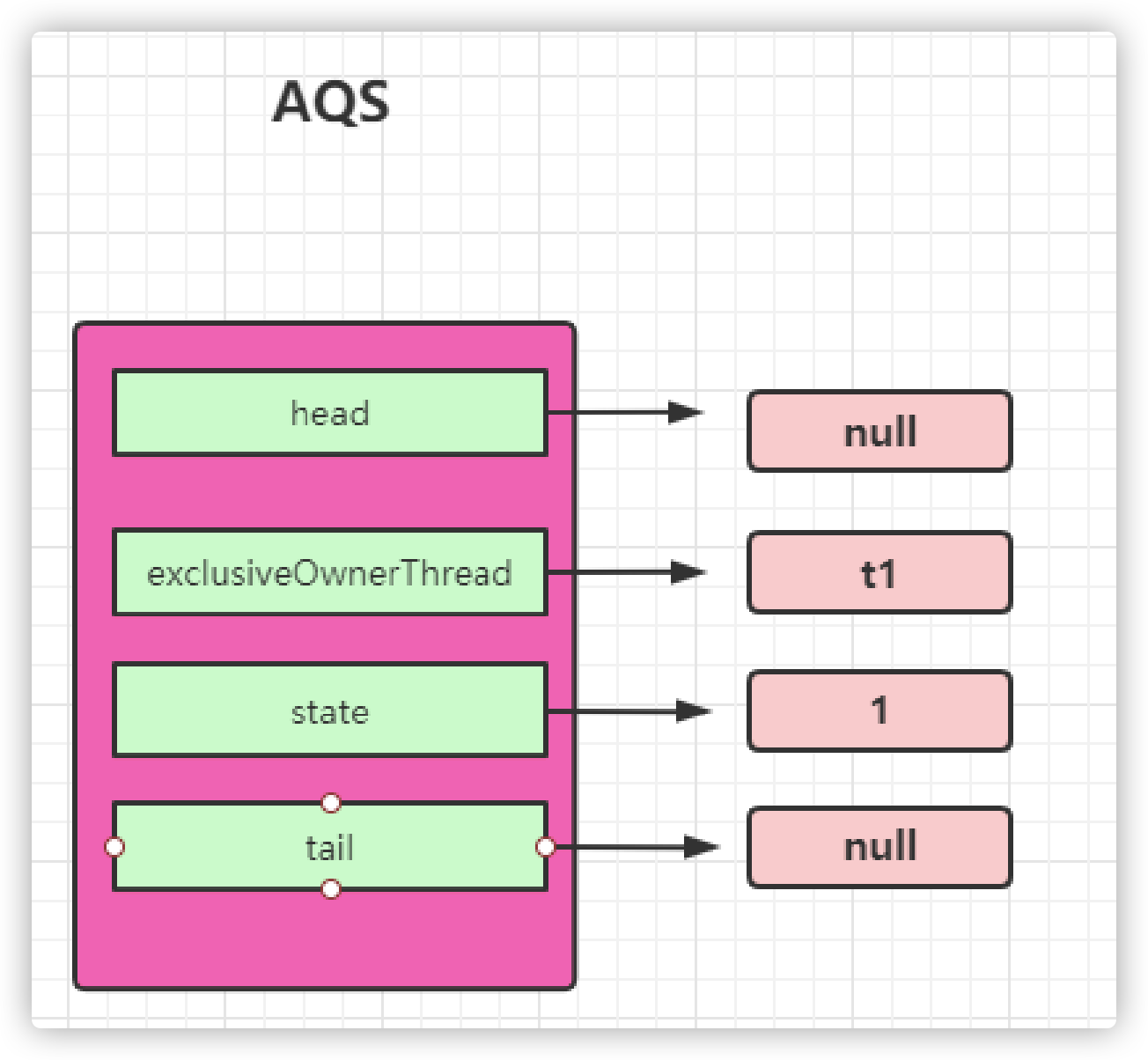
第二个线程加锁失败的场景
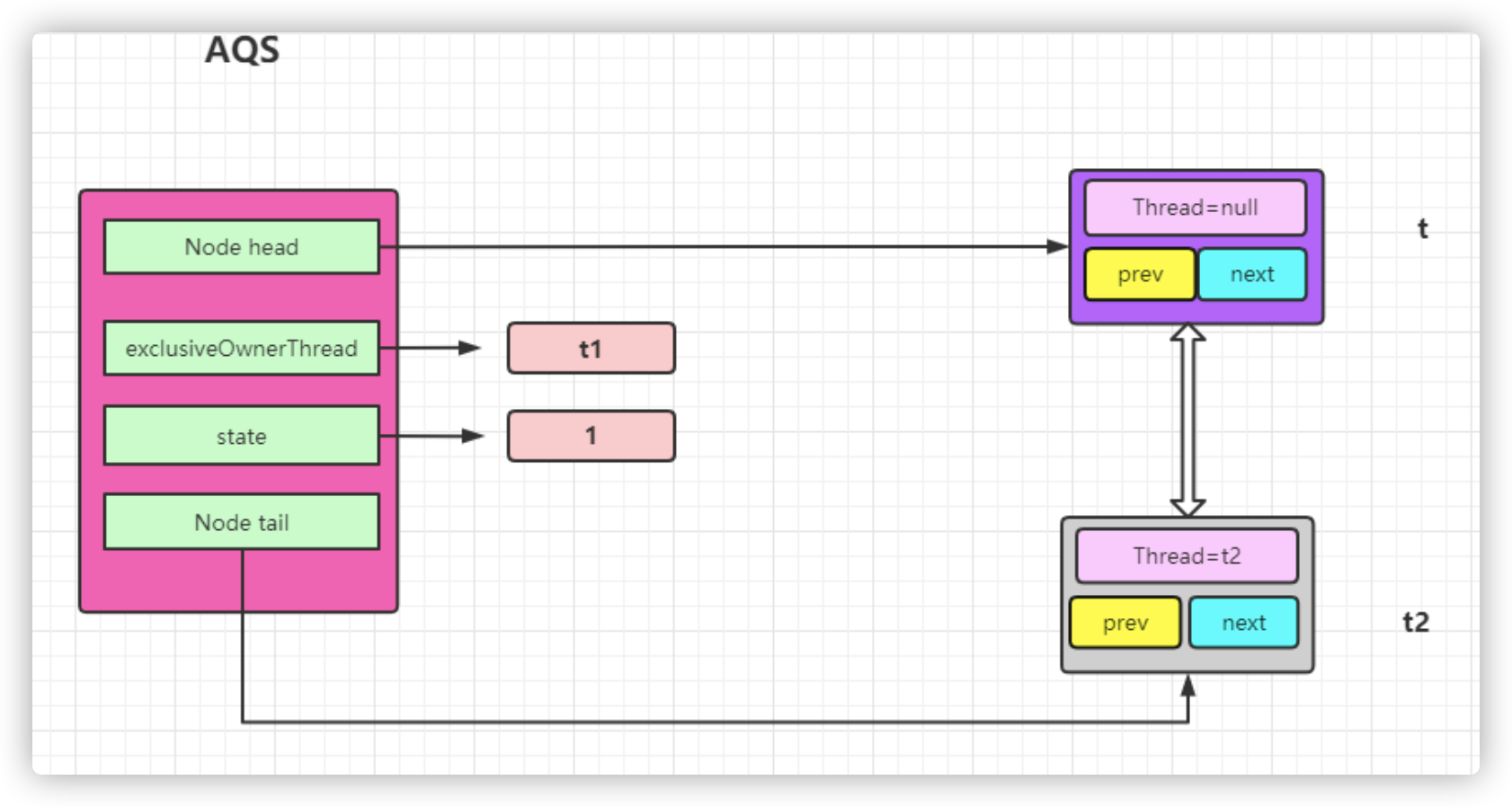
第二个线程加锁成功的场景
- t1先释放锁
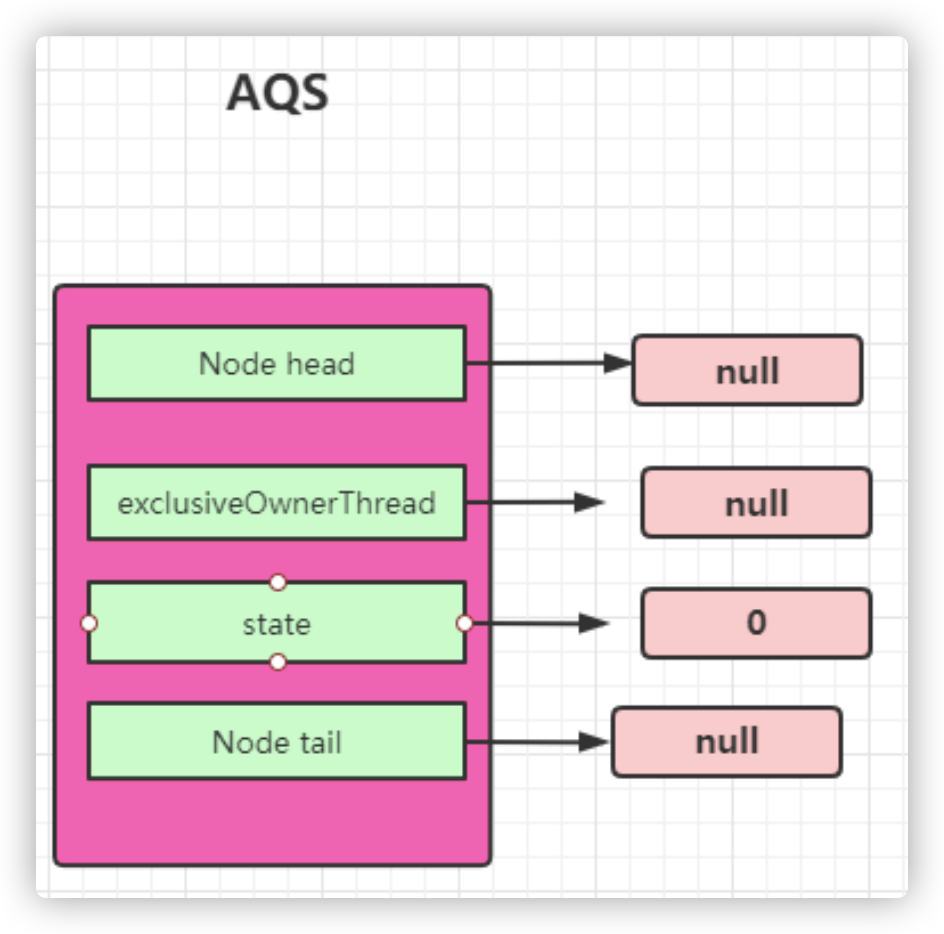
- t2加锁成功
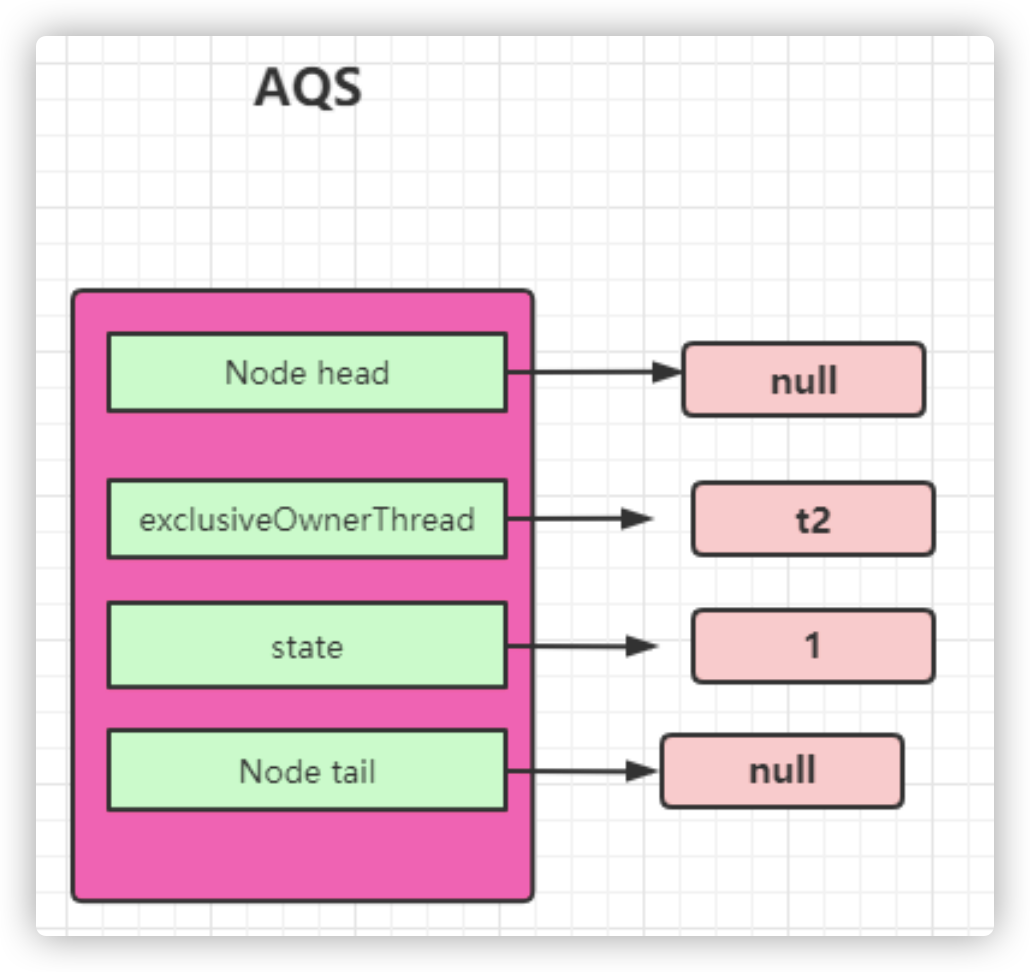
第三个线程来加锁的场景








